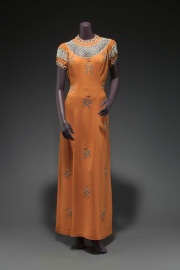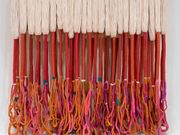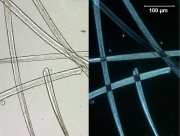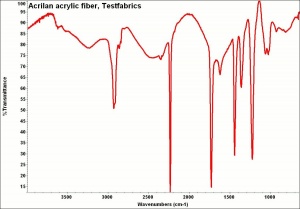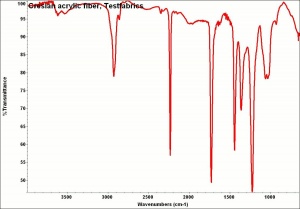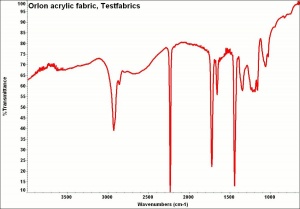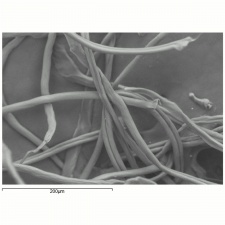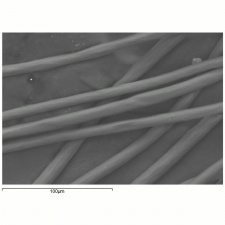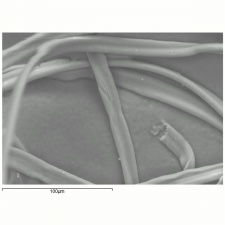Acrylic fiber
Description
A manufactured fiber in which the fiber-forming substance is any long chain synthetic polymer composed of at least 85% by weight of Acrylonitrile units (Federal Trade Commission definition). Acrylic fibers were first commercially manufactured in 1950 by DuPont as the product Orlon®. The Acrylic resin is dissolved in a solvent, then extruded through spinnerets to produce long, continuous filaments. The smooth, Thermoplastic fibers are resistant to wrinkles, chemicals, UV light, Weathering, insects, Mildew, and moisture. They produce fabrics that are non-allergenic, lightweight, soft, durable and fast drying. They are, however, susceptible to heat and will melt or burn. Acrylic fibers are used for carpets, blankets, drapes, outdoor products (awnings, geotextiles, etc) and apparel such as sweaters, coats, linings, hosiery, dresses, and shirts.
For acrylic fiber identification, see http://cameo.mfa.org/wiki/Category:FRIL:_Acrylic
Synonyms and Related Terms
acrylic fibre (Br.); fibra acrílica (Esp.); fibre acrylique (Fr.); acrylaat vezel (Ned); polyacrylonitrile;
Orlon® [DuPont]; Creslan® [Sterling]; Zefran® [Badische]; Acrilan® [Solutia]; Dynel® [Union Carbide]; Crylor; Courtelle®; Dralon®;
Collection Risks
Combustible. Accumulates static charge.
Links to Oddy Test results posted on AIC Wiki Materials Database Pages for individual materials below
- World of Fabric Acrylic Prefelt "Forest" tested in 2010
Environmental Risks
Physical and Chemical Properties
Insoluble in most common organic solvents. Resistant to weak acids. Burns readily with smoky flame and acid smell. The ash is hard.
Cross section = variable (dogbone, round, bean shaped or lobed)
| Moisture regain | 1.0-3.0% |
|---|---|
| Elongation | 20-55% (dry) |
| Tenacity | 2.0-3.6 g/denier (dry) |
| Melting Point | 215-255 (soften) |
| Density | 1.16-1.18 |
Working Properties
Forms and Sizes
Comparisons
Properties of Synthetic Fibers
Resources and Citations
- M. Joseph, Introductory Textile Science, Holt Reinhold & Winston, Fort Worth, 1986.
- G.Cook, Handbook of Textile Fibres:II. Man-made Fibres, 5th edition, Merrow Publishing Co., Durham, England, 1984.
- Hoechst Celanese Corporation, Dictionary of Fiber & Textile Technology (older version called Man-made Fiber and Textile Dictionary, 1965), Hoechst Celanese Corporation, Charlotte NC, 1990
- Rosalie Rosso King, Textile Identification, Conservation, and Preservation, Noyes Publications, Park Ridge, NJ, 1985
- Meredith Montague, contributed information, 1998
- Fabrics.net : Link
